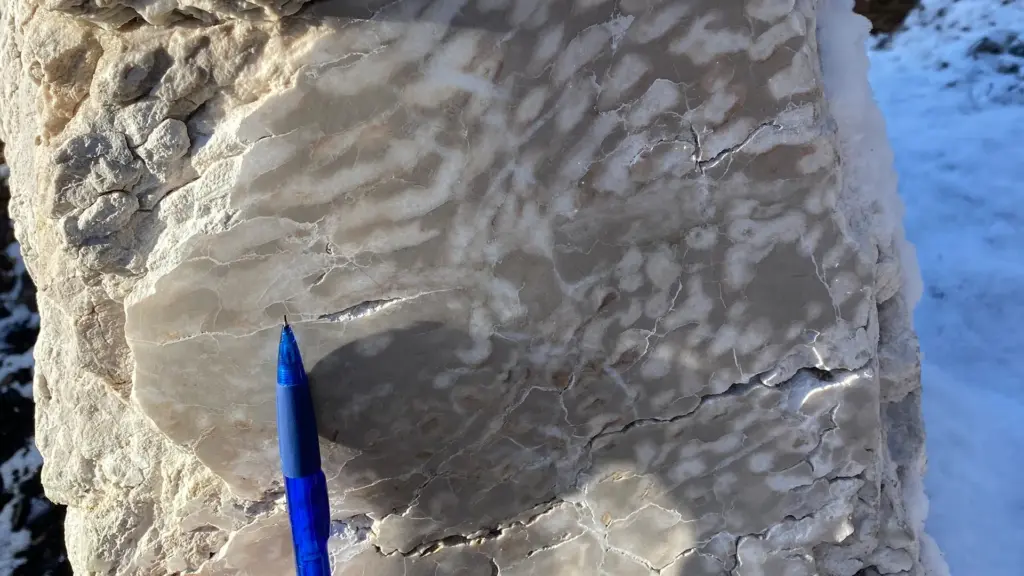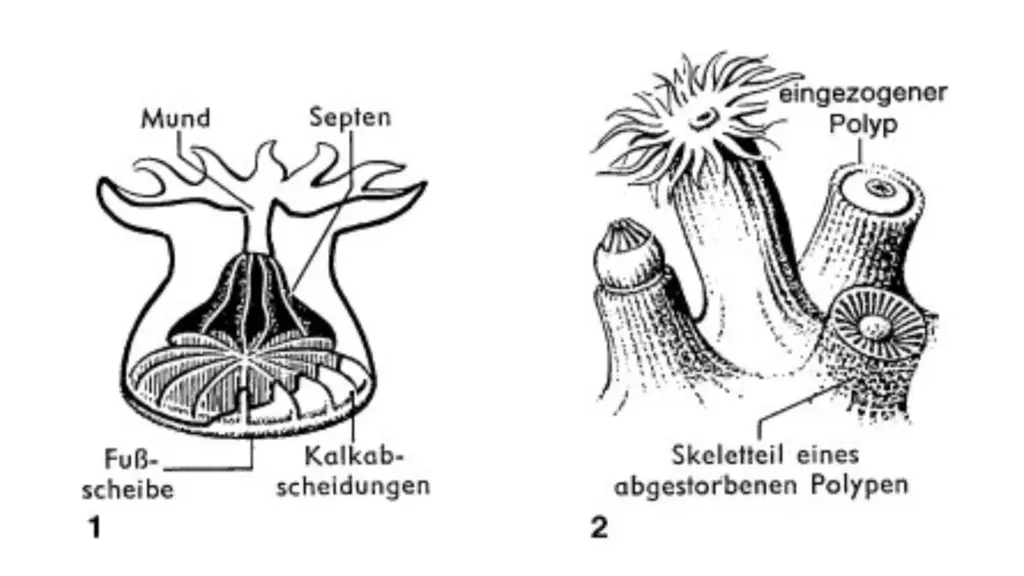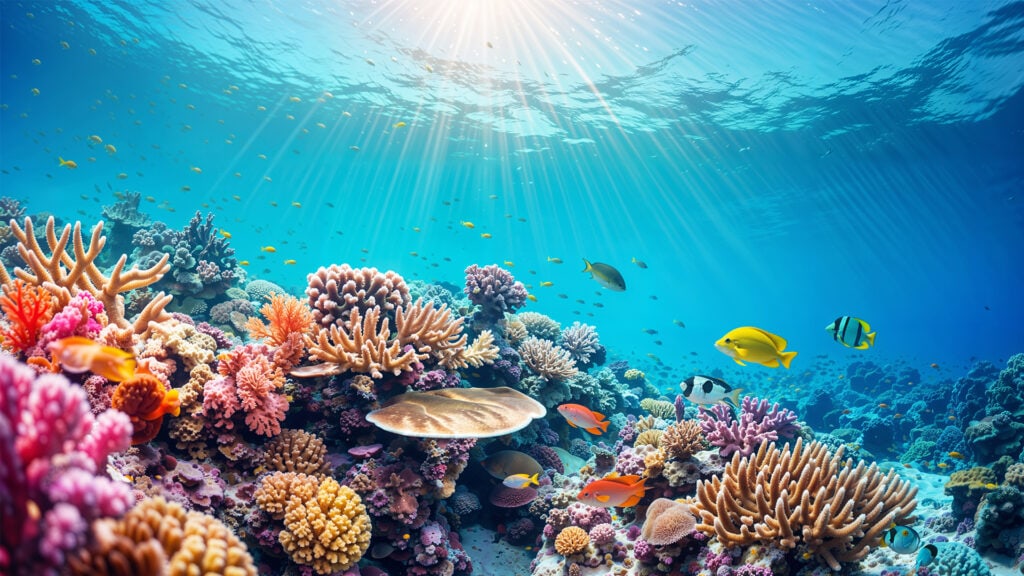The exhibit rock at this station is a fossilized coral, discovered right here along the Geo.Trail. Its characteristic coral-like structure is clearly visible through the contrasting light and dark areas:
- The light-colored rock material represents the skeleton of this branching coral.
- The dark material is sediment that fills the spaces between the individual coral branches.

This exhibit rock is a fossilized coral embedded in Upper Rhaetian Limestone. The light areas represent the coral’s calcareous skeleton, while the dark areas are former spaces between the coral branches that have been filled with sediment. (Image source: Own illustration)
A fossil from the Upper Rhaetian Limestone
This coral of the order Scleractinia (stone coral) and genus Thecosmilia lived in a shallow sea 200 million years ago. It is embedded in the Upper Rhaetian Limestone rock formation and dates back to the geological age of the Triassic.
Corals belong to the so-called sessile animals (sessilis = “sedentary”). Sessile animals live permanently in a fixed place and cannot move. Many have lost the ability to move during their evolution.
Stone corals are therefore not plants or stones,
but animals!
The way corals live
Stony corals are made up of tiny individual organisms called coral polyps—small, cup-shaped animals with tentacles. These tentacles help them filter food from the water. Thousands of polyps live together in colonies, forming intricate coral structures.
Stony corals exist in symbiosis with microscopic algae known as zooxanthellae. These algae provide essential nutrients to the corals, primarily through photosynthesis, and play a crucial role in helping them form calcium carbonate, which builds their skeletons.

Schematische Zeichnung einer Steinkoralle. 1: Junger Polyp einer Steinkoralle; 2: Stockabschnitt des sich aus einem solchen Polypen bildenden Korallenstocks (Bildquelle: https://www.spektrum.de/lexikon/biologie/steinkorallen/63531)
How do stony corals grow?
Most of a coral’s structure is composed of “dead” calcium carbonate, while the living polyps inhabit only the uppermost layer. These polyps secrete the mineral aragonite, which later transforms into calcite, gradually building the coral skeleton. Over thousands of years, this process forms the vast and intricate structures of coral reefs, the most biodiverse ecosystems in the ocean.
Many islands, such as the Maldives, were formed through the accumulation and growth of coral reefs. Corals thrive in shallow, sunlit tropical coastal waters, with most species living at depths of just a few dozen meters, where warm temperatures and minimal currents create ideal conditions.

Various coral species form a reef structure on Flynn Reef, part of the Great Barrier Reef in Australia. (Image source: OpticalDesign, Adobe Stock, 689633247)
What does this fossil tell us about the past?
The fossilized coral offers a fascinating insight into the past: it grew in warm, subtropical waters – just like in the regions that can be found today near the equator (from 30° south to 30° north). But how did this tropical seabed, where the fossil once lived, end up here in our mountains? To answer this question, we must travel back in time and understand the formation of the Alps.
